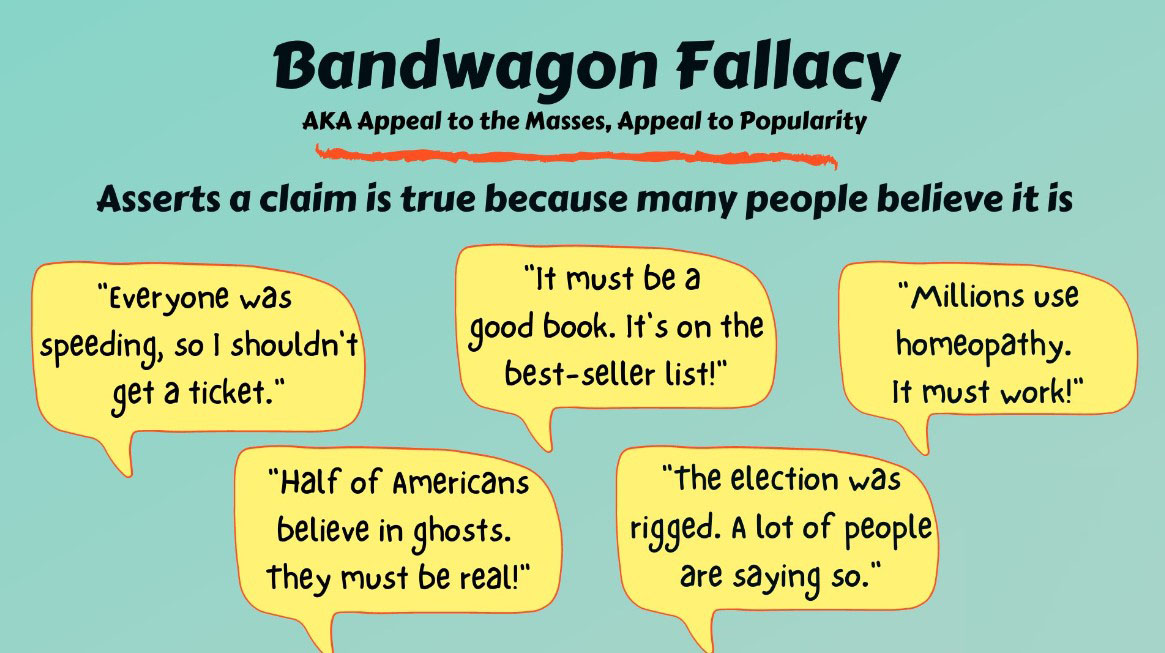The bandwagon fallacy, also known as the appeal to popularity or argumentum ad populum, is a cognitive bias that occurs when individuals believe that something is true or valuable because it is widely accepted or popular. People tend to follow the crowd and assume that if many others believe or do something, it must be the correct or desirable choice.
Explanations:
The bandwagon fallacy is based on social influence and the human desire to conform to the opinions and behaviors of a group. It can lead to the acceptance of ideas or practices without critical examination.
Examples:
Fashion Trends: People may adopt a particular fashion style or trend simply because it is popular, even if it does not suit their individual preferences.
Social Media: Users may engage in certain behaviors or support specific causes because they see others doing the same, regardless of the merit or accuracy of those actions.
Voting and Politics: Voters might support a candidate or party because they are seen as the frontrunner, without fully understanding their policies or qualifications.
Solutions:
Critical Thinking: Encourage critical thinking and independent evaluation of ideas, products, or practices, rather than blindly following the crowd.
Research and Analysis: Base decisions on research and analysis rather than popularity or acceptance.
Individual Values: Consider your own values, needs, and preferences rather than simply conforming to popular choices.
Awareness of Bias: Be aware of the bandwagon fallacy and its impact on decision-making.
Addressing the bandwagon fallacy involves recognizing the inclination to follow popular choices without critical evaluation and actively promoting critical thinking, research and analysis, consideration of individual values, and awareness of the bias to make more informed and independent decisions.
